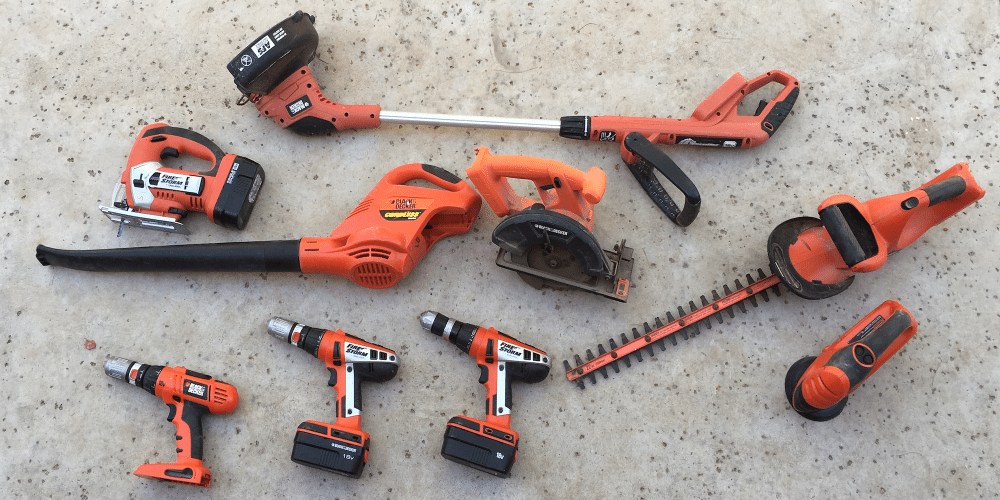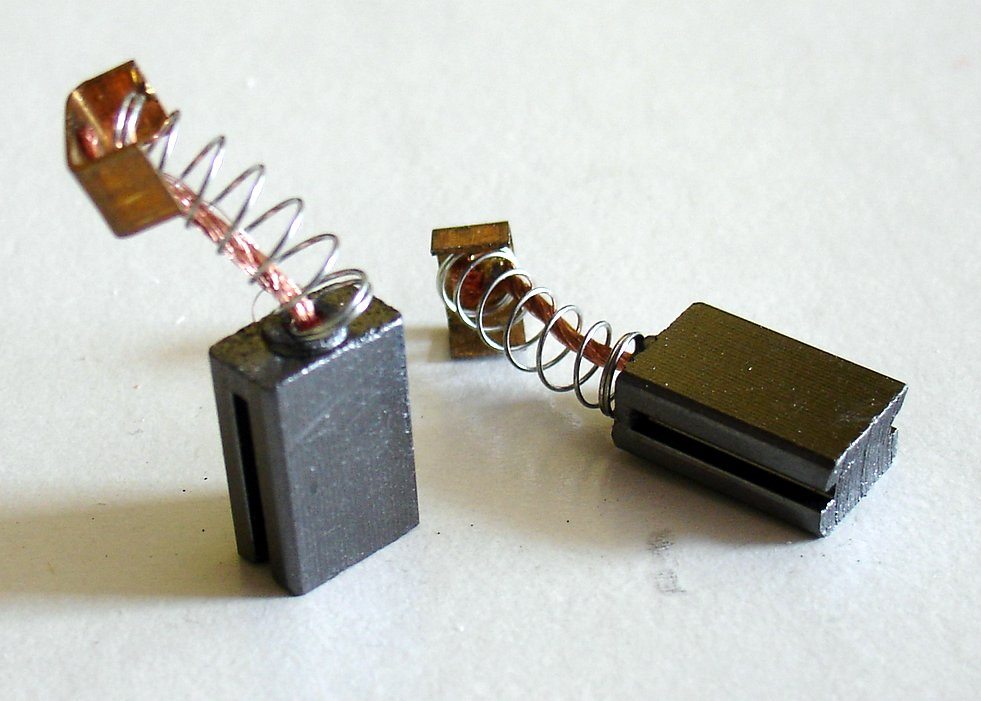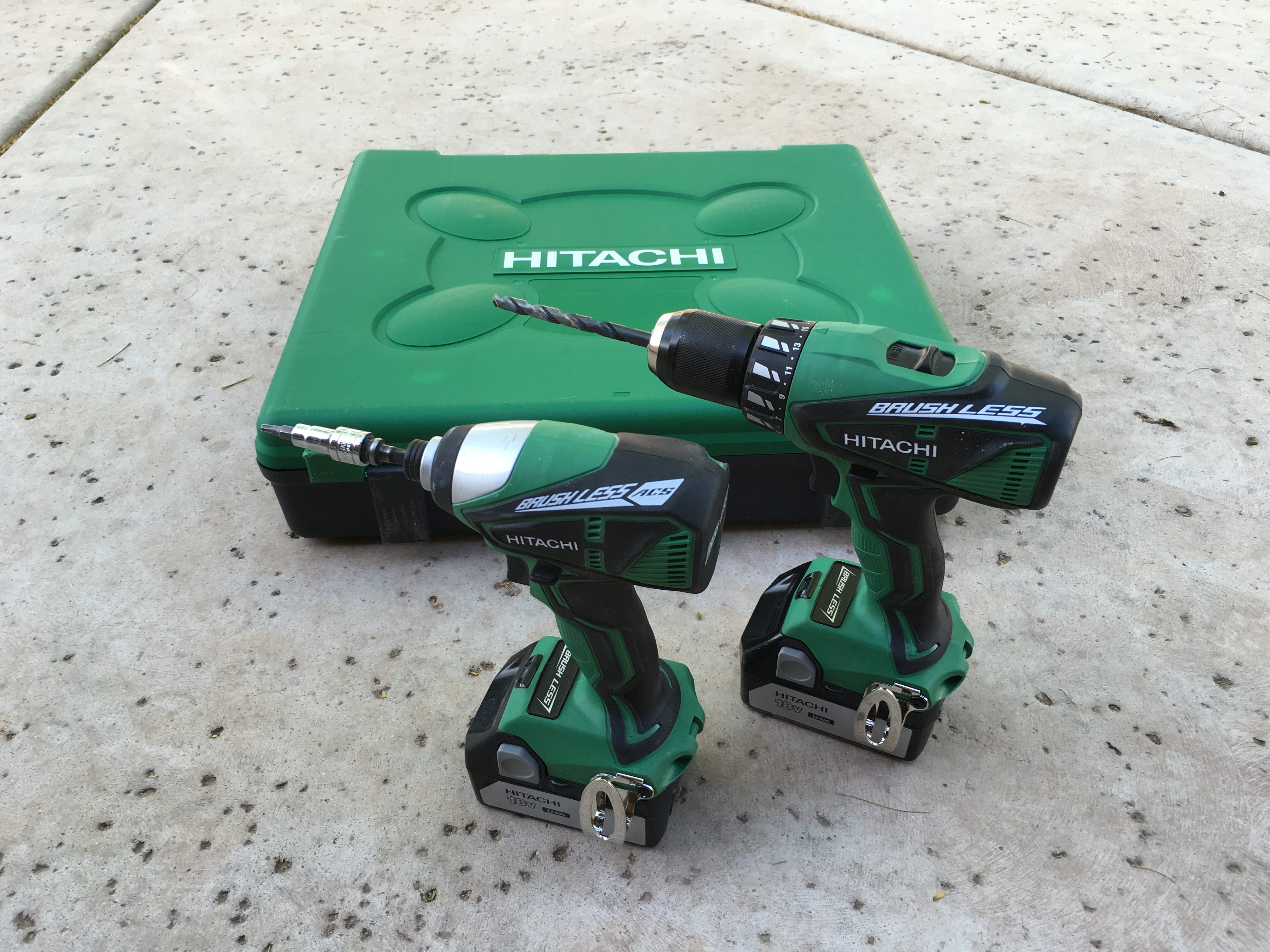
For many years I’ve used the iconic Black and Decker 18-volt Firestorm cordless power tool system. When I was last in the market for cordless power tools, the Firestorm brand was a DIY powerhouse, but in the intervening years the NiCad batteries and relatively massive weight of these tools has made this system something of a dinosaur. It’s also starting to take a toll on the wallet; it’s been increasingly difficult finding replacement parts and batteries. For the last few years, I’ve had to rely on knock-off parts bought through eBay and other less reputable suppliers.
When I talk about this Firestorm system of tools, I’m really talking about an entire ecosystem. For many, myself included, the investment in a cordless power tool is really an investment in an entire line of tools. Every manufacturer has their own take on battery shape and size. They are, for the most part, not interchangeable between brands. Buy a Ryobi drill and you’re either committing to buying nothing but Ryobi tools or you’re resigning yourself to having a huge supply of very expensive batteries that are only usable for the specific tool they are designed for.
The only reasonable way, in many people’s opinions, is to choose a battery system and then buy tools to take advantage of your supply of batteries.
The Firestorm system had an incredible collection of power tools. Not only cordless drills but saws, nailers, impact drivers, and even yard equipment. I have 3 drills, a couple of flashlights, a circular saw, a jigsaw, a reciprocating saw, an air nailer, a pair of sanders, a yard trimmer, a leaf blower, and a set of hedge clippers that all take the same 18-volt Firestorm battery. Add to that a collection of about a dozen batteries in various states of charge-ability and half a dozen chargers and you begin to understand the impact of switching to a new manufacturer.
Most people, myself included, don’t invest in an entire garage full of tools at one time. Instead their collection winds up being the result of a dozen or so trips to the hardware store over a period of years. The first purchase might be the yard trimmer or the cordless drill. The next time you’re at the store looking for a portable saw, you think to yourself, “Well, I’ve already got some of those batteries so I might as well buy this one so I have extra batteries and chargers when I need them.” Then it’s the leaf blower. Then the air nailer. Before you realize it, you’re walking the aisles at the big box store, upset that there isn’t an 18-volt Black and Decker table saw available!
My search for a new cordless tool platform began simply; I was looking for a battery-powered impact driver. The Firestorm model is notoriously hard to find and I’m at the point where I don’t really want to invest serious money in a defunct platform. Most of the time, I used my cordless drill to drive screws and bolts but there are times when an impact driver is really nice to have. I have a nice air-compressor-powered impact driver but it’s not terribly convenient when I’m not in my garage with ready access to compressed air (that’s another project for another GeekDad post).
I had two requirements for a new driver: lithium-ion batteries and brushless motors.
Why lithium-ion? Lithium-ion batteries have two main advantages over traditional nickel- cadmium (like my Firestorm) batteries. The first, and possibly most significant, is weight. For the same voltage and energy rating, a lithium-ion battery can be much smaller and lighter. This has huge advantages for handheld power tools that you’re planning to use all day long or hold above your head to drive 3-inch screws into your rafters. It also allows manufacturers to get a little bit more creative about sizes; many brands have different-sized batteries you can swap out depending on your particular job. If you need big power for hours and hours at a time, you can clip in a big battery and it can last you all day. If you need something small and lightweight to do some handyman work, you can clip in a much smaller battery, reducing weight and bulkiness of your tool.
The second big advantage that lithium-ion brings to the table is almost zero “shelf drain.” What does that mean? Traditional nickel-cadmium or nickel-metal hydride batteries have a significant self-discharge rate that means the batteries are draining down just by sitting on the shelf or in your toolbox. Many shops I’ve visited have a charger per battery just so they can leave the batteries plugged in all the time to make sure they’re available when they’re needed. This is both dangerous (risk of fire) and expensive (you need lots of chargers if you have lots of batteries). Lithium-ion doesn’t suffer from this problem. You can keep your batteries on a shelf charged up and ready to go and be confident that they’ll be ready to work when you are.
Why brushless motors? This one is a little geekier than the battery problem. Traditional electric motors operate by having an electromagnet (the armature or rotor) spin inside the field of a permanent magnet (the stator). The field of the electromagnet is flipped as the armature spins around and the back and forth pulse is what gives the motor its power. The problem with this setup is you need some way to get electricity into the rotor while it’s spinning.
Wires don’t work very well when they’re spun about, as anyone who has ever tripped on a tangled pile of wire will tell you, so what is most often used are spring-mounted pieces of metal called brushes. These brushes are responsible for the cool sparks you see coming out of an electric drill motor; the springs keep the metal brushes pushed up hard against the rotating face of the electromagnet inside the motor so they’re able to ensure that the electric circuit is always completed even though the conductors are constantly spinning out from underneath them.

Image: By Stan Zurek (Own work) CC-BY-SA-3.0
Traditional motors and their brushes have a lot of advantages: they’re cheap to produce, they’re simple to troubleshoot when they fail, and you can make them very small. They have a lot of disadvantages too: the brushes wear out and need to be replaced, the sparks are indicative of wasted energy, they’re hard to cool, and the need to maintain physical contact means there is a practical limit on how fast the motor can spin.
Since the advent of the transistor, we’ve been able to make cheap, easy-to-produce micro-controllers. This means we no longer have to rely on a spinning rotor to reverse the magnetic field in an electric motor but, instead, we can make use of small digital circuits to control the polarity. This allows us to flip the electric motor inside out and put the permanent magnets on the interior spinning part of the motor and surround it with computer-controlled electromagnets that drive the motor very efficiently.
This configuration is much more expensive to produce and yields more complicated motors but the trade-offs are immense. Besides the lack of sparks, improved cooling, and lack of brushes to replace, the onboard computer is now able to sense exactly how much power is needed to spin the motor and meters out only that much. For the most part, traditional motors with brushes are either on or off; they always operate at full power. This is an incredible advantage in a battery-operated tool because power is a limited resource.
So let’s get down to brass tacks. What are my options for brushless lithium-ion cordless drills?
Searching on Amazon and walking the aisles of hardware stores indicate that most of the big manufacturers have an offering in the brushless lithium-ion market. I focused my sights on the cordless drill combos, most coming with a standard drill and an impact driver along with a pair of batteries and a charger. For someone starting over from scratch, this would provide me a solid base to build my collection out of. Most of the highest ratings center around the 18-volt offerings, and in my experience this is a great spot for the pro-sumer to settle into.
Porter Cable, Makita, Dewalt, Bosch, and Milwaukee are on the top of the list, as expected, but I keep seeing what, to me, was an unusual “newcomer” pop up in searches for highly rated tools. Hitachi. Huh? Hitachi is by no means a newcomer to the power tool market but, in my experience, their offerings have always focused almost exclusively on the industrial market. I’m completely unfamiliar with them as a manufacturer of home improvement or DIY-level tools.
I started asking around about Hitachi tools. They seem to get very high ratings on Amazon and in many woodworking forums and everyone who has reviewed them seems to think they’re incredibly well-made, durable, and powerful and, if not on par with Porter Cable and the lot, at least approaching the same level of quality at what is often a lower price. At the end of the day, when I was deciding which button to click on Amazon, the decision came down to the Makita XT248M and the Hitachi KC18DBFL.
Both are 18-volt lithium-ion combo packs that include a hammer drill and impact driver with brushless motors. The Makita includes two 4.0-Ah batteries that outmatch the 3.0-Ah batteries offered by the Hitachi and, of course, have the always-dependable Makita name attached to them. Both come in at roughly the same price on Amazon, approximately $289 depending on the day of the week and the shifting of the winds, and include a carrying/storage case, a single charger, and belt hooks. For me, the difference came down to the warranty.

Makita, along with most of the other established power tool manufacturers, offers a very generous 3-year warranty on the tools. Hitachi, however, is offering a lifetime warranty on its lithium-ion power tools. To me, this is astonishing and proved to be the decision-maker. Some will argue that Makita drills don’t need a lifetime warranty because they’re virtually indestructible. To me, Hitachi’s lifetime warranty is a statement that it intends to make a big play in the home improvement market and that it is standing by the quality of its tools. I’ve known people with Black and Decker drills that lasted for 15 years and I’ve known people who had Porter Cable drills fall apart after a year on the job. To some extent it’s a crap shoot but, for my money, I’m rolling the dice on Hitachi this time.
So let’s get down to brass tacks. Was the upgrade worth it?
I’ve been using the Hitachi impact driver and hammer drill exclusively for the past month and I have to say I’m impressed. The impact driver, in particular, is so much lighter and well-balanced for driving long screws and big lag bolts into dimensional lumber, it has been a dream. I bought the new tool set in anticipation of building some shelving in my garage and the difference between using the impact driver and my old cordless drill is night and day. But, honestly, that’s the difference between any impact driver and a cordless drill.
The real difference I noticed was in how light the impact driver is. I drove a whole box of 3″ screws into 2x4s and 4x4s and there was noticeably less fatigue in my hands and wrists. I’m guessing this is because it’s lighter but also because it being an impact driver means I’m not having to apply as much pressure to drive the screws in. The hammer drill functionality is great as well; I had to drill some holes into the exterior of my home in order to install a new junction box and the associated conduit and the difference between my older drill and the new Hitachi hammer drill was night and day.
Do the brushless motors make a difference? Initial testing says yes, I made it through multiple six-hour workdays without needing to recharge batteries. Even with new 18-volt batteries on the Firestorm platform, I would need multiple battery changes throughout a single workday. I credit this almost entirely to the increased efficiency of the brushless motor. Most of the screws I drove required little power and therefore took maximum advantage of the onboard computer’s ability to trickle out power as needed instead of giving me max torque with every screw. Count me as a satisfied customer!
Is this Hitachi combo pack right for everyone? Part of me wants to say, “Yes, go out and buy it today” but I realize $300 for two cordless drills isn’t a reasonable expense for everyone. I do a lot of building and I am hard on my tools, therefore, 18 volts and a lifetime warranty were important for me. I recently had the opportunity to use the Milwaukee 2497-22 M12, which is a similar hammer drill and impact driver combo that makes use of 12-volt batteries as opposed to the 18-volt monsters in my Hitachi set.
I was quite impressed with this set and rarely felt like they were underpowered for the jobs we were working on. The build quality on the Milwaukee tools is fantastic and they offer a generous five-year warranty. This is one of the few tool sets in the 12-volt range that I’ve found that offers brushless motors, too. If you aren’t planning on doing a lot of heavy construction or six-hour build days and are budget-sensitive I would highly recommend checking out the Milwaukee set as a more affordable alternative to the Hitachi or Makita combo sets.


I work for a company that sells and repairs tools and although we font sell Hitachi cordless tools I think for the most part all drills are pretty equal, if you talk to someone who repairs them they will tell you that as far as Milwaukee tools go they are not what they use to be and the fact that for any kind of warranty word to be done you have to send if to Milwaukee do with that in mind I wouldn’t buy Milwaukee tools, and why not buy American made, fact by the end of 2016 all Dewalt tools will be made and assembly in the USA oh and buy the way I’m not a Dewalt fan I’m just telling it as a fact
I have been using Bosch products myself for years. Do you reckon that it’s worth the switch to Hitachi?
It’s funny, I’d never considered that the interchagable battery thing ties you in to a particular brand, always saw it as more of a way of saving time and effort, and maybe even money if you buy a ‘bare’ tool from time to time. But looking from the other side of the fence I can see there are drawbacks, especially if you ‘chosen’ brand does a really terrible job at a particular tool that you then feel compelled to buy.
I have used black + decker and dewalt products . from both of these i found black + becker tools are the best.
Who makes the gearboxes in cordless drills? They all look similar.
I ran across this article for all the sentiments/reasoning contained in it. I was surprised to not see RIDGID represented. I own the RIDGID drill/impact pair that you were searching for, and they’ve been great. Previous were Hitachi and Dewalt (both Ni-Cad). I’m specifically in the market for a high torque (> 1000 lbs) hammer drill, and only a few manufacturers have anything in that class.
Now that it’s been a couple years since your review, have you by chance given RIDGID a look?
(I’m not a regular reader of your blog _yet_, so pardon if you’ve already reviewed them…)